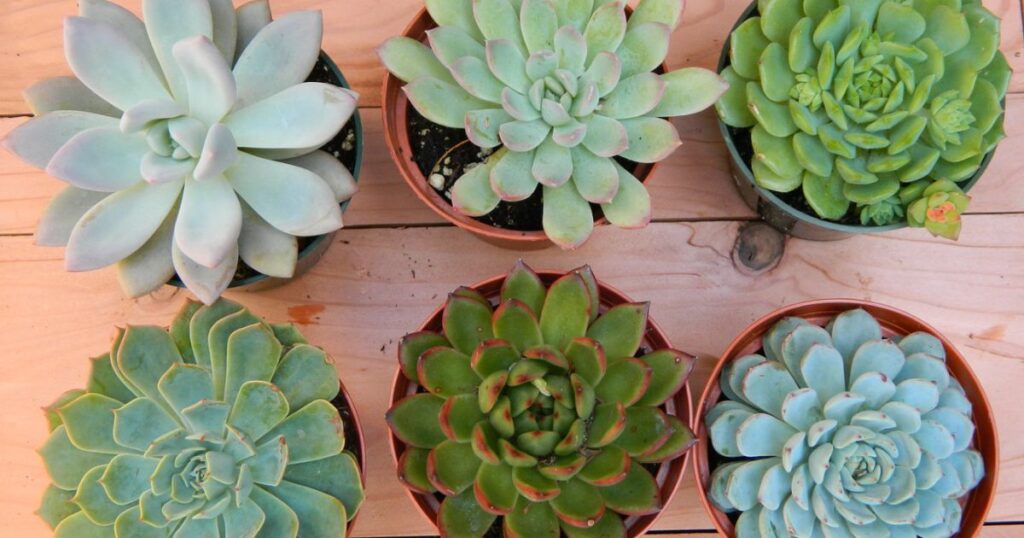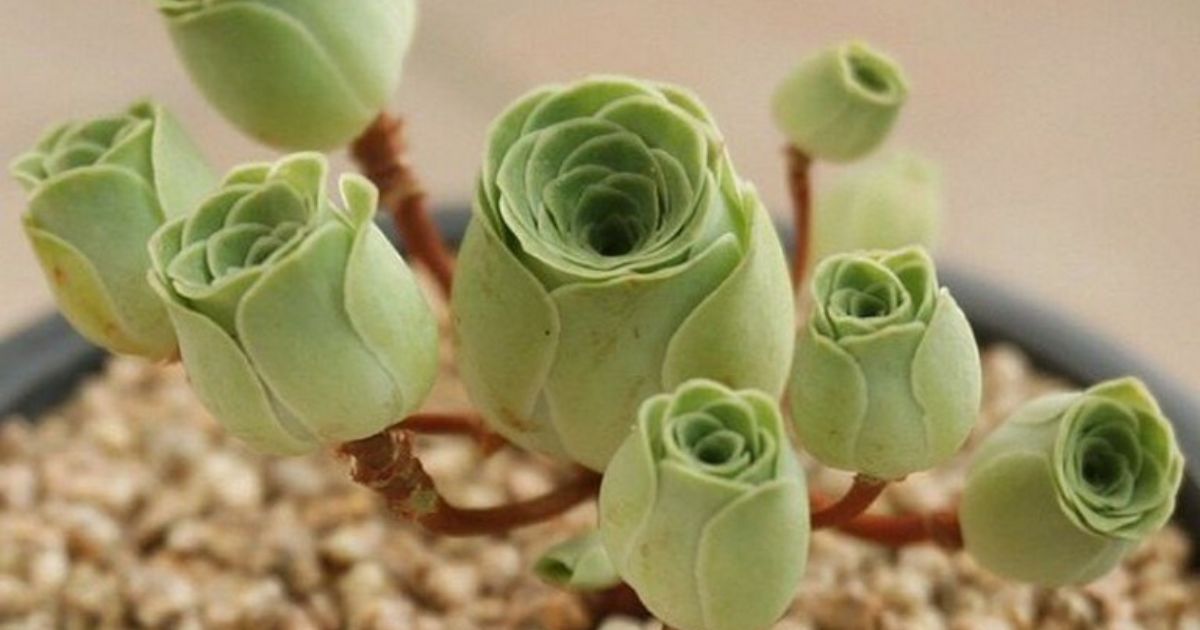Repotting succulents involves transferring them to a new container with fresh soil. While it’s a beneficial practice for their growth, improper repotting can potentially harm or even kill succulents. Overhandling, damaging roots, or using the wrong soil can disrupt their delicate balance. When done carefully, repotting can promote healthy growth, but it’s essential to follow proper techniques to avoid harming your succulents.
Have you ever wondered, Can repotting succulents kill them? Well, the answer might surprise you. Join us on a journey to discover the do’s and don’ts of succulent repotting, ensuring your plants thrive and flourish. Let’s unlock the secrets to keeping your succulents happy and healthy.
Repotting succulents refers to the process of transferring these plants to a new container or pot. While it can be beneficial for their growth, improper repotting can potentially harm succulents if not done carefully. Overly large or deep pots with inadequate drainage may lead to overwatering, which can ultimately harm or kill the succulent.
Understanding Succulents
Before we dive into the topic of repotting, it’s important to understand what succulents are and why they are unique.
What are Succulents?
Succulents are a diverse group of plants that store water in their leaves, stems, or roots. They are adapted to arid environments and have evolved mechanisms to thrive in dry conditions. These adaptations include specialized tissues for water storage, reduced leaf surfaces to minimize water loss, and drought-resistant qualities.
Resilience of Succulents
One of the reasons succulents have gained popularity is their reputation for being hardy and adaptable. They can survive in various conditions and require less frequent watering than many other types of plants. However, this resilience doesn’t mean they are invincible, especially when it comes to repotting.
The Importance of Repotting Succulents
Repotting is a necessary part of succulent care, and it serves several essential purposes.
Refreshing the Soil
Over time, the potting mix that succulents are planted in can become depleted of nutrients or develop drainage issues. If you’re wondering, my succulent wrinkly it’s important to consider that wrinkling is a common sign of dehydration in succulents. Repotting allows you to refresh the soil and provide your succulent with a better growing medium.”
Addressing Root-bound Succulents
Succulents can become root-bound when their roots outgrow their current pot. This can lead to reduced growth and overall health. Repotting provides the opportunity to give your succulent’s roots more room to grow.
Preventing Pest and Disease Issues

Repotting also gives you the chance to inspect your succulent’s roots for any signs of pests or diseases. Addressing these issues early can prevent them from spreading and causing long-term harm to your plant.
The Risks of Repotting
Repotting, while beneficial when done correctly, does carry some inherent risks for succulents.
Root Damage
One of the most significant risks during repotting is root damage. Succulent roots are often fragile, and disturbing them can stress the plant.
Overwatering
Improper repotting can lead to overwatering, which is a primary threat to succulents. Overwatering can cause root rot and other issues that may harm or kill your plant.
Transplant Shock
Succulents can experience transplant shock after repotting, which can manifest as wilting, discoloration, or slowed growth. In severe cases, transplant shock can be fatal.
Choose the Right Pot
Select a pot that is only slightly larger than the current one. A pot that is too large can lead to overwatering.
Use Well-Draining Soil
Succulents need well-draining soil to prevent overwatering. Mixing in sand or perlite can improve drainage.
Allow the Plant to Dry
Before repotting, allow the soil to dry out completely. Dry roots are less likely to break, and you can avoid overwatering.
Handle with Care
Gently remove the succulent from its old pot, being cautious not to damage the roots.
Signs It’s Time to Repot
Knowing when to report your succulents is crucial. Look for the following signs:
Overcrowded Roots
If the roots are visible through the drainage holes or tightly packed, it’s time to repot.
Slow Growth
If your succulent has stopped growing or is showing signs of stress, it may need a new pot.
Poor Drainage
If the soil doesn’t drain properly, repotting with well-draining soil is necessary.
Cracked or Damaged Pot
If the current pot is damaged or too small, it’s time for a new one.
Best Time to Repot
Spring and early summer are the best times to report succulents. This is when they are actively growing and have the best chance of recovering from the process.
Steps to Repotting Succulents
The steps to repotting succulents involve choosing the right pot, gently removing the succulent, inspecting and trimming roots, preparing well-draining soil, repotting, watering lightly, and allowing for recovery.
Gather Your Materials
Before you start the reporting process, ensure you have the necessary materials on hand:
Succulent in need of repotting. A new pot with drainage holes. Well-draining potting mix
Trowel or gardening tools. Gloves (optional)
Prepare the New Pot
Choose a new pot that is only slightly larger than the current one and has drainage holes. Ensure it’s clean and dry.
Remove the Succulent
Gently tap the old pot to loosen the soil and carefully remove the succulent, trying to keep the roots intact.
Inspect the Roots
Examine the roots for any signs of rot, pests, or damage. Trim away any unhealthy roots.
Prepare the Potting Mix
Create a well-draining potting mix by mixing standard potting soil with sand, perlite, or pumice.
Repot the Succulent
Place a layer of the potting mix in the new pot and position the succulent in the center. Fill the pot with the mix until the plant is secure.
Water Sparingly
Water the succulent lightly and let the soil settle. Avoid overwatering at this stage.
Allow for Recovery
Place the newly potted succulent in a bright, indirect light location and avoid direct sunlight for a few days to help it recover from transplant shock.
Caring for Repotted Succulents
Caring for repotted succulents involves avoiding direct sunlight initially, monitoring watering, and providing extra care to help them adjust to their new environment.
| Key Points | Description |
| 1. Repotting Succulents | Discusses the process of repotting succulent plants. |
| 2. Risk Factors | Identifies factors that may harm succulents during repotting. |
| 3. Choosing the Right Pot | Emphasizes the importance of selecting an appropriate pot. |
| 4. Soil Selection | Highlights the significance of well-draining soil. |
| 5. Watering Care | Explains proper watering practices after repotting. |
| 6. Avoiding Overhandling | Advises against excessive handling of succulents. |
| 7. Timing Matters | Suggests the best time to repot succulents. |
| 8. Signs of Stress | Describes signs that indicate stress in succulents. |
| 9. Recovery and Adaptation | Offers tips for helping succulents recover post-repotting. |
| 10. Summary and Conclusion | Summarizes the main takeaways regarding repotting succulents safely. |
Avoid Direct Sunlight
For a few days after repotting, keep your succulent out of direct sunlight to minimize stress.
Monitor Watering
Be extra cautious with watering during the weeks following repotting. Allow the soil to dry out before watering again.
Fertilize Sparingly
Hold off on fertilizing your succulent for a few weeks to avoid overstimulating it.
Watch for Signs of Stress
Keep an eye on your succulents for signs of stress, such as wilting or discoloration. If these occur, adjust your care accordingly.
FAQ’s
Is it bad to report succulents?
Repotting succulents is not inherently bad, but it should be done carefully to avoid potential harm from root damage or overwatering.
Why is my succulent dying after repotting?
Succulents may die after repotting due to root damage, transplant shock, or overwatering, which can stress the plant’s health.
Will my succulent grow bigger if I report it?
Yes, repotting your succulent into a larger container can encourage it to grow bigger by providing more room for its roots to expand and absorb nutrients.
What to do after repotting succulents?
After repotting succulents, place them in indirect light, water sparingly, and avoid fertilizing for a few weeks to help them adjust and minimize stress.
Conclusion
Repotting succulents is a necessary part of their care, but it must be approached with care and knowledge. While the process carries some inherent risks, such as potential root damage and overwatering, these risks can be minimized by following the right steps and techniques. When done correctly, repotting can actually enhance the health and longevity of your succulents, ensuring they continue to thrive in their new homes.
So, don’t be afraid to give your succulents a fresh start when needed, but remember to handle them gently, choose the right pot and soil, and provide the necessary post-repotting care to help your succulents flourish. With the proper approach, repotting can be a positive step in your success’s journey to beauty and health.










